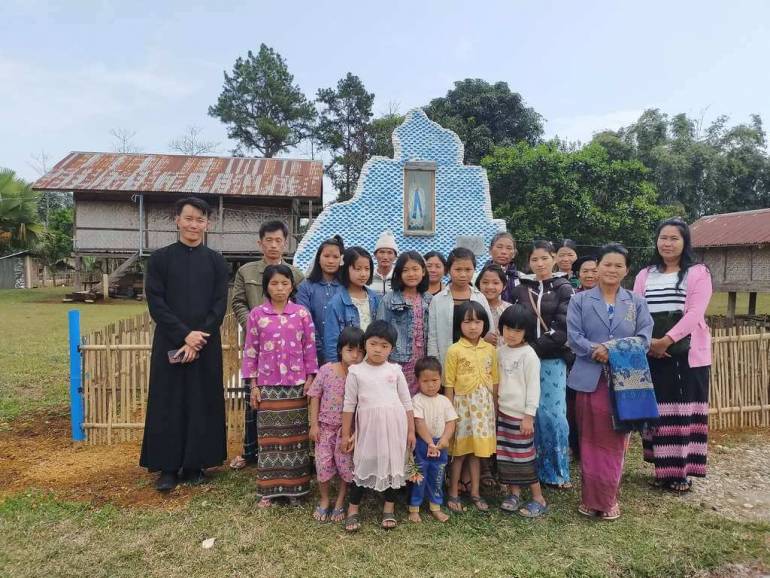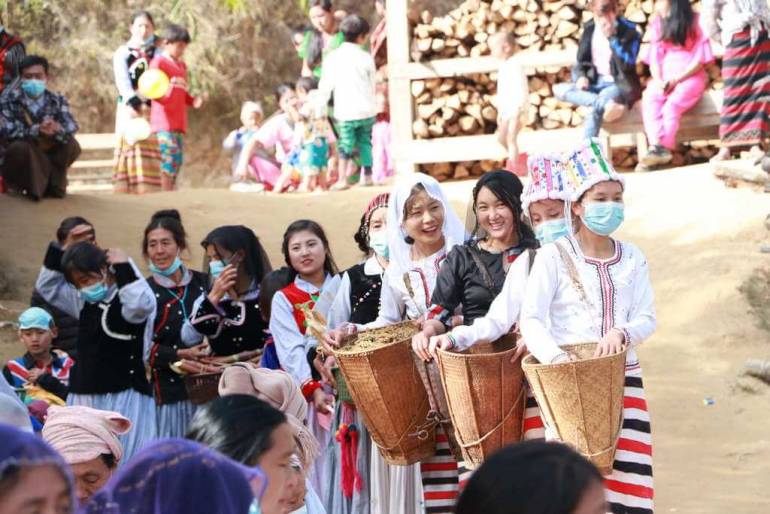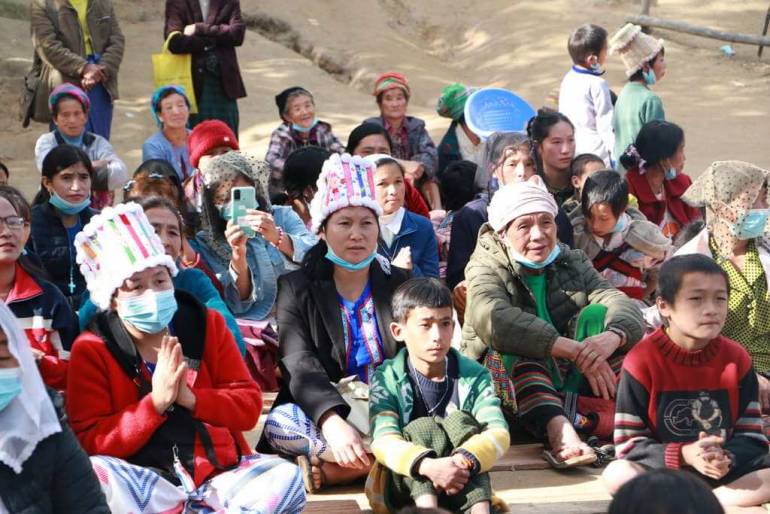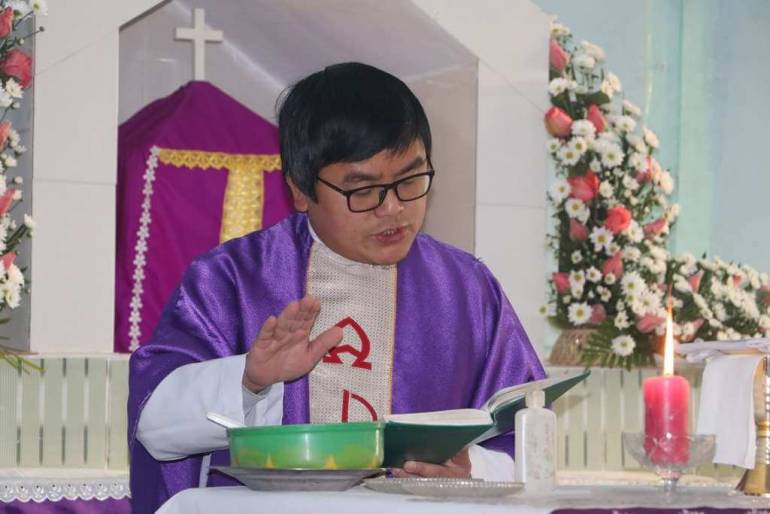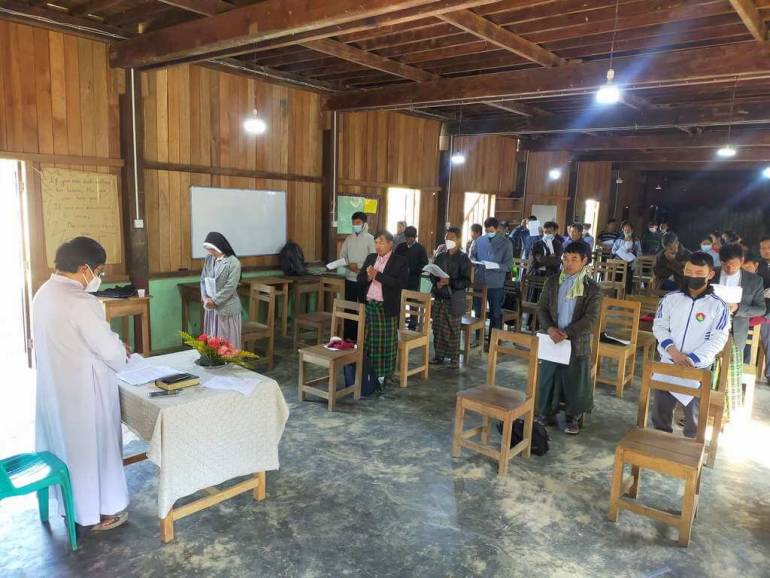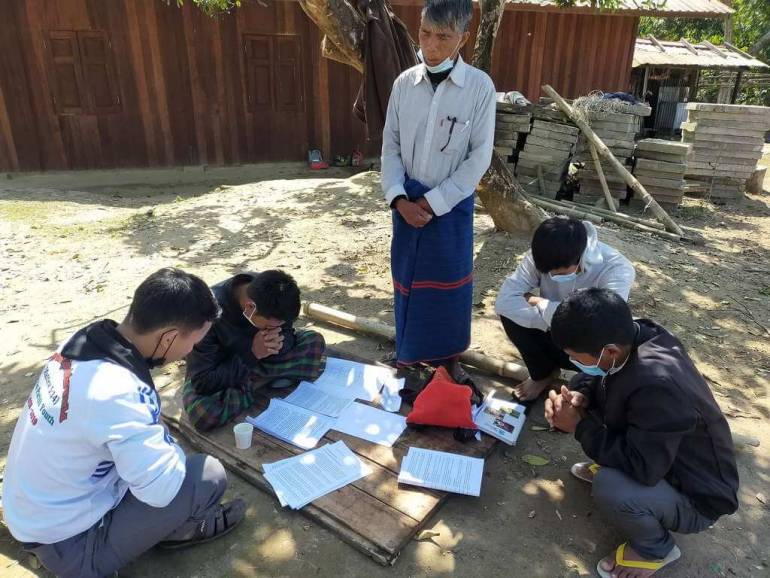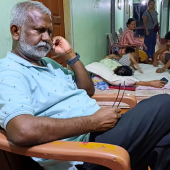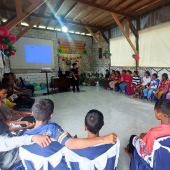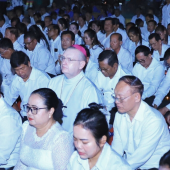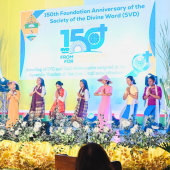Ethnic minority Catholics in Myanmar aspire to worship in local dialect
The ethnic minority Catholics from Putao parish expect to have hymnals, liturgical texts, and prayer books in their dialect for the expansion of mission and a better understanding of faith.
The church at Putao, one of the undeveloped and remote parishes, is situated in the northern part of Myanmar in the Diocese of Myitkyina, Kachin State.
In Putao, there are many ethnic people such as Jinghpaw, Rawang, Lisu, Shan, Chinese, and others numbering over 100,000 populations. Among them, Lisu and Rawang are the majority.
Though daily Masses are celebrated in four different languages at the parish church, Sunday Masses are usually held in the Jinghpaw language. Those who do not understand the Jinghpaw language, find no meaning or effect of Masses for their spiritual nourishment.
"Here, we say daily Masses in four languages—Jinghpaw, Burmese, Eglish, and Lisu. But Sunday Mass is said in Jinghpaw. We have translations in the Lisu language for Masses, prayers, and hymns but there are no translations in Rawang language,” said John Awng Htoi, parish priest, “And teaching catechism is a big challenge for us.”
It is difficult to manage catechism classes for young children in their respective dialects. That is why they find it difficult to understand the meaning of Masses and Catholic faith, he explained.
Until now, there are no teaching materials and prayer texts for local people in their dialect to use in faith formation programs and there is only a Protestant version of the Bible.
“We do not have Catholic version of Bibles in our native Lisu and Rawang people. We rely on Protestant versions for liturgical celebrations and prayer services,” said David Ah Hpung, a catechist.
David who serves in Ziun village added, “There are only Rawang and Lisu ethnic people in our village. But for liturgical celebrations, we use the Jinghpaw language.”
There are no texts and translations in Rawang. For that reason, Rawang and Lisu Catholics do not understand the faith well. They are not very much interested in liturgy, especially children.
It is difficult to spread the Catholic faith to people of other denominations. There is also much influence of Protestants among people around. As a result, it is very easy for them to convert to other denominations from the Catholic faith, David said.
In Ziun village, there are over three hundred families. Though the arrival of the Catholic mission has been over 50 years, there are only seven Catholic families and 54 members in Ziun.
Another reason for the not growing Catholic population in this region is because of the late arrival in the area. Here, Protestants arrived earlier than Catholics. They have been over 100 years of presence while the Catholic presence is over 70 years.
One of the earliest missionaries to work in the area was the Missionary Society of Saint Columban, commonly known as the Columbans, an Ireland-based religious congregation.
The majority of Catechists who serve in the parish are trained in short courses.
“Only a few catechists went to colleges and higher education for faith formation. Because of this, it is a big challenge to impart and teach our faith effectively. As it is a remote and dependent parish, we are strongly to rely on the diocese,” said Father John.
But the diocese also cannot support well the catechist families and conduct renewal courses for them. All these reasons somehow affect the mission, said Anthony Awng Myat, in charge of Nampal village.
The presence of the Catholic Church in the Putao region has been 72 years and only three more years are needed to celebrate the Diamond Jubilee of the parish.
The first Columban missionary who arrived in Putao was Bishop Howe in 1950. In the following year, there was one baptized Catholic family convert named Njawng Naw Mai and Nshang U Ma Tu.
In 2011, a new Lungsha Yang parish with 360 Catholic families, around 2000 faithful populations has been expanded from Putao.
According to the lists of the 2022 liturgical year, there are 33 catechists, 22 chapels, 370 Catholic families, and over 2000 faithful populations in Putao parish. Catholics are still a minority compared to other Denominations in Putao.
The first parish priest of Putao was Father Peter Kareng Gam Awng in 1980. He died in 2004.
There were over 10 parish priests. The present parish priest John, who is native-born takes charge of the whole parish. He speaks six native languages and he is also Vicar Forane of Putao Zone.
Father John tries to educate many young children— both boys and girls in boarding houses expecting human resources as well as a vocation to the priesthood, consecrated life, and collaboration of the faithful in parish missionary activities.
He also expects to receive an associate priest for a more successful pastoral ministry in the area.
(With inputs from Thomas)
Radio Veritas Asia (RVA), a media platform of the Catholic Church, aims to share Christ. RVA started in 1969 as a continental Catholic radio station to serve Asian countries in their respective local language, thus earning the tag “the Voice of Asian Christianity.” Responding to the emerging context, RVA embraced media platforms to connect with the global Asian audience via its 21 language websites and various social media platforms.





